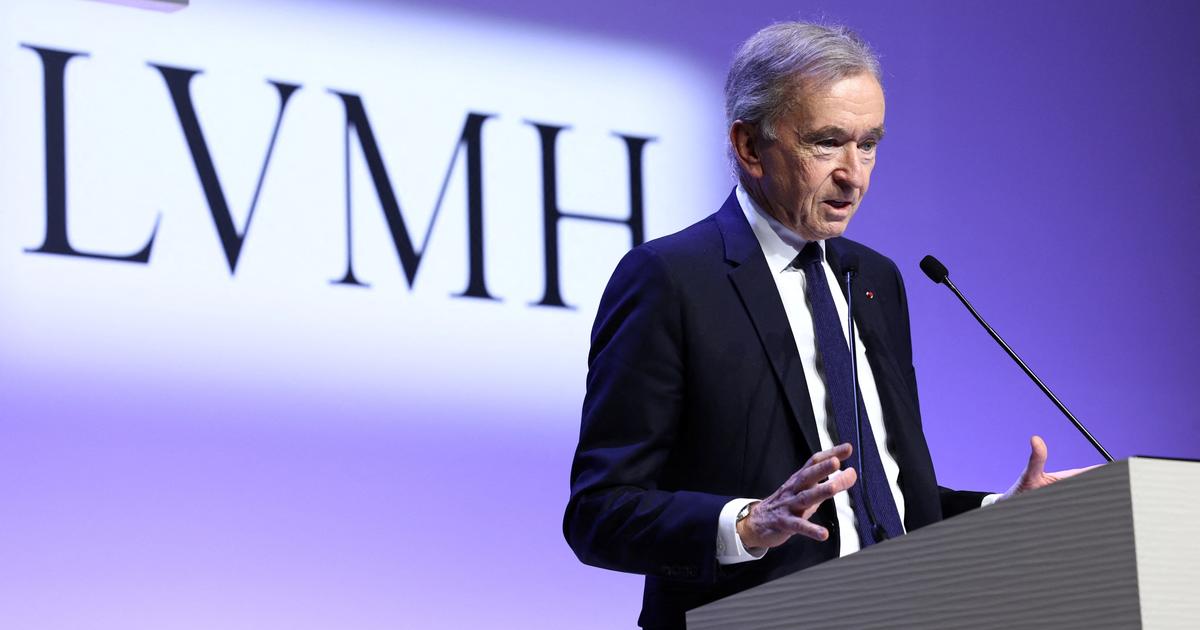Bitcoin recovers slightly after a sharp drop 1:02
(CNN) --
Counterfeits are a huge problem for high-end designers around the world: Luxury brands lost $98 billion in sales to counterfeits in 2017 alone.
These losses can damage both profits and reputations, which is why some brands are turning to technology to protect their products, brand equity and consumers.
Despite being competitors, the luxury brand conglomerate LVMH joined forces with Prada and Cartier, in April 2021, to establish the Aura Blockchain Consortium, a non-profit platform that creates a "digital twin" for designer products. .
Blockchain is a digital ledger that cannot be edited, changed, or tampered with.
It is the same technology that cryptocurrencies are based on, the prices of which have plummeted lately.
But it has many other applications, and Aura uses it to give luxury products a unique digital identifier that will help customers ensure their purchase is authentic.
The future of crypto and blockchain, according to the founder of Globant
"Blockchain is a very fast evolving technology and it's really complex," says Daniela Ott, Secretary General of the Aura Blockchain Consortium.
"Aura is about making it easy
for luxury brands to use
blockchain ."
advertising
To date, more than 20 brands use Aura's
software
, with more than 17 million products registered on the platform, says Ott.
"These brands are competitors in every other way, but they're collaborating on this technology to make this move faster, in the safest way," he says.
"Traceability and trust"
By creating a "digital twin" for physical products such as shoes or bags, Aura's
software
compiles a log book with information such as the type of material and where it came from, where and when it was made, and how many were produced.
Ott says this will offer consumers a higher level of proof and protection by acting as a digital certificate of authentication that uses "bank-grade encryption" and is "impossible to spoof", frustrating counterfeiters.
The digital twins, which can be accessed via a web page or mobile app, will provide more information about the origin of the product, improving "traceability and trust" around sustainability and ethical issues for consumers. aware, he says.
However,
blockchains
have their limitations: Information is only as trustworthy as the person entering it, says Ott, warning that "if a brand doesn't have a good relationship with the provider,
blockchains
won't help."
Sustainability is a key concern for the group.
As a private
blockchain
built from the ground up, Aura says its platform uses less power than public
blockchains
.
The platform also gives brands control over the information they share and keeps brand and consumer data secure, Ott says.
Aura launched its cloud-based software in early 2022. Ott says its
plug-in
technology will allow brands to integrate the product into their existing operations with "zero blockchain knowledge."
And more brands are getting on board.
Designer streetwear group OTB became a founding member in October 2021, and last month diamond and gemstone specialist Sarine Technologies joined the group as well.
Founding members contribute to development costs and have more say in governance, says Ott, while all members pay a license fee for
software
services and for each digital twin produced.
Counterfeit products, like the ones pictured, cost designer brands billions a year, as well as damaging their reputations.
(Photo: PATRICK T. FALLON/AFP via Getty Images)
trending technology
Other fashion brands are also using
blockchain
tools .
Audemars Piguet and Vacheron Constantin have joined the Paris-based open source
blockchain
platform Arianee, while Karl Lagerfeld's photo archive is authenticated on the
Lukso Network public
blockchain .
Creating a digital identity could become increasingly important for second-hand luxury resellers, a rapidly growing market.
Online platforms like Hardly Ever Worn It and Vestiaire Collective need to authenticate products before selling them, which is a multi-step process involving digital and physical checks, says Victoire Boyer Chammard, Global Head of Authentication at Vestiaire Collective.
Watches, toys and luxury cars, among the brands with the best reputation worldwide
"Counterfeiting has been around for decades and is constantly advancing," says Chammard.
Vestiaire's team of 60 authenticators checks digital documentation, including photos, before examining each item.
AI and
blockchain
could help speed up the digital authentication process, says Chammard, adding that this would help human authenticators rather than replace them.
"We would still need an expert to perform a physical exam to verify all the digital data," he says, adding that if luxury brands use the same technology, it would help resellers easily access and use the information.
Blockchain could also be useful beyond fashion, says Ott: luxury sectors such as art, cosmetics, perfumery and furniture could benefit.
In the future, Ott says the logbook could also contain information on product maintenance and upkeep, which would help better determine a product's value for resale.
The most recent addition to the Aura consortium is German carmaker Mercedes-Benz, which has joined as a founding member and plans to use the platform to explore different aspects of digital branding, such as the creation of NFTs (non-fungible tokens). for in-car digital art experiences.
"Our measure of success is to incorporate all the luxury brands," says Ott.
BlockchainBrands



/cloudfront-eu-central-1.images.arcpublishing.com/prisa/QLZQABDBZ5HQNGMWYSXWPVJXMY.JPG)











